3 Criterias for Display Case Lighting in Museum application
3 Criterias of Lighting Authenticity in Museum Display:
1st Criteria (Structural Integrity):
The lighting must objectively, completely, and accurately reveal the form, contours, and structure of the artifact.
2nd Criteria (Surface Authenticity):
It must faithfully render the texture, color, and patterns of the object.
3rd Criteria (Artistic Detail):
Finally, it should illuminate brushwork, craftsmanship, and technique with precision.
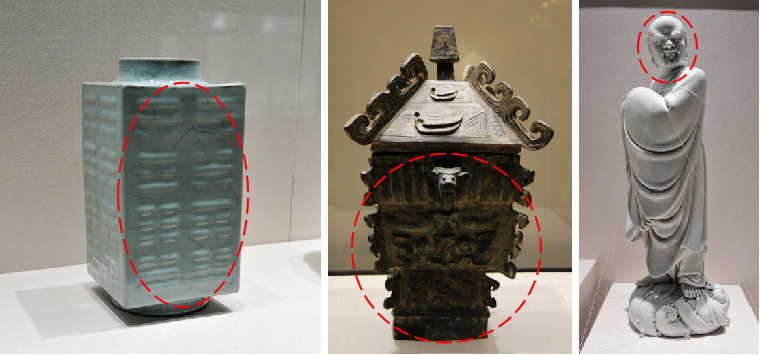
Fig. 1
The red-circled area in Fig. 1 illustrates a prevalent issue in current museum showcase lighting where the 1st criteria (Structural Integrity) fails to be met.This deficiency:Distorts the artifact’s form, contours, and structural attributes, diminishing its aesthetic and scholarly value;Transmits erroneous visual information, degrading the exhibition’s didactic function and visitor engagement;Exposes a fundamental failure in subject representation—without proper structural illumination, no effective visual interface exists to convey secondary (textural/color) or tertiary (artisanal) details.
To achieve the 1st criteria (Structural Integrity), the key light direction must be determined based on the artifact’s three-dimensional morphology—this constitutes the first critical decision in showcase lighting design.To fully articulate a three-dimensional artifact, showcase lighting must incorporate top-light, side-light, and base-light positions—especially for rotating or undefined exhibits—with no allowable omissions in any directional axis.
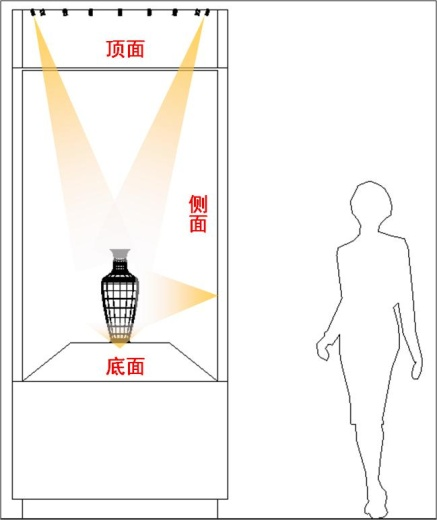
Fig. 2
Per Fig. 3, museum-grade showcases frequently exclude flank-mounted luminaires to maintain clean sightlines and minimalist enclosures - a compromise made when lighting engineers cannot achieve both conservation lighting standards and architectural design intent.
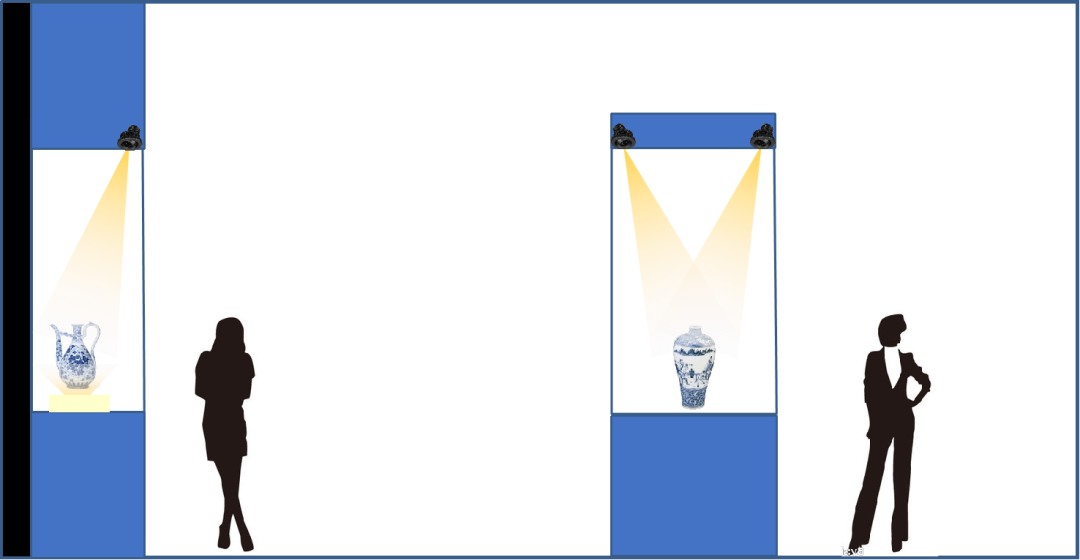 Fig. 3
Fig. 3
The fundamental purpose of museums lies in artifact presentation. Most institutions prioritize optimal object illumination over showcase aesthetics. However, the current industry disproportionately focuses on technical parameters (color temperature, illuminance, CRI) while neglecting visual design principles (light/shadow modeling, sightline composition, chromatic psychology). This explains the widespread failure to achieve the Primary Principle (Structural Integrity).
During facility evaluations, construction teams observe frequent omission of lateral lighting in existing museums and mistakenly adopt this as a benchmark. Such 'directional errors' and 'standardization fallacies' constitute the root cause of contemporary showcase lighting dilemmas. Consequently, visitors typically experience artifacts with the following compromised visual effects (see Fig. 4).
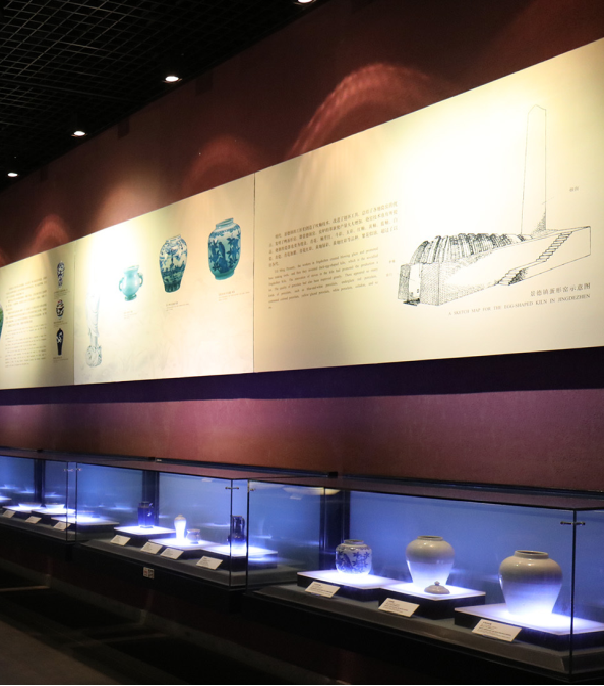
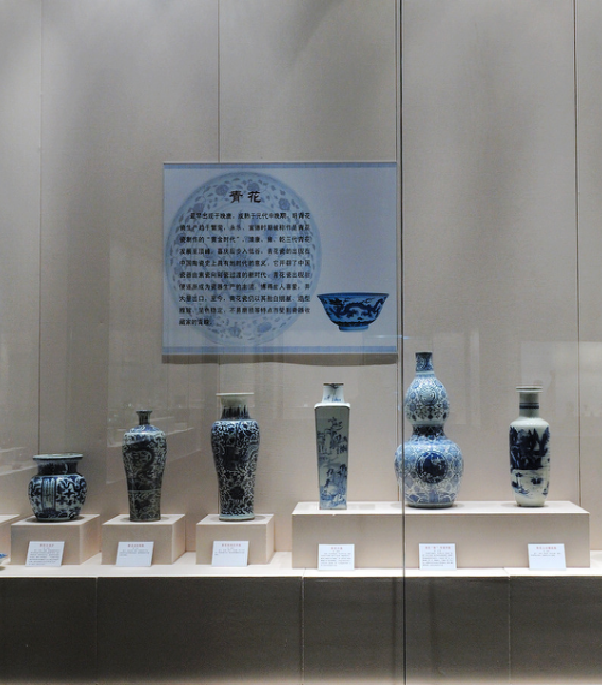
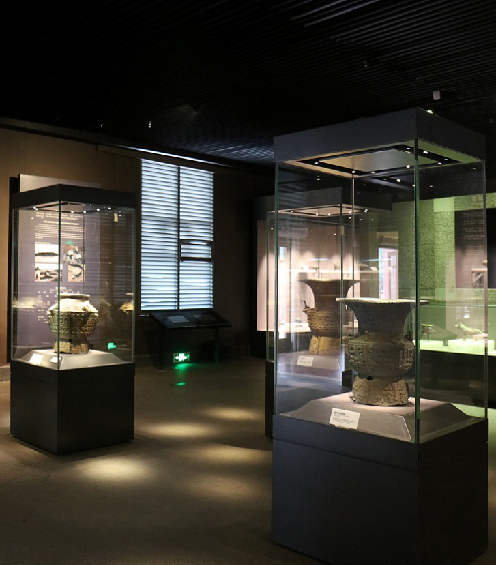
Fig. 4
What is the value of impeccable exhibition environments and state-of-the-art equipment if a museum fails to achieve optimal artifact presentation? Visitors come to engage with cultural heritage, not interior decor.
The strategic selection of primary lighting direction is the decisive factor in successfully conveying both the formal aesthetics and intrinsic significance of an artifact, presenting a unified visual narrative to the audience.
Two Fundamental Principles of Light Application and Their Analytical Frameworks in Museum Lighting
Before determining the primary lighting direction, it is essential to acknowledge and adhere to the two fundamental principles of light application—scientific and objective realities that remain immutable regardless of human perception. This foundational understanding eliminates speculative assumptions and ensures methodologically sound decision-making.
First Principle of Application: Light propagates linearly through air according to the laws of geometric optics. When obstructed by an object, it creates unilluminated surfaces below and casts shadows of the overlying structure (see Fig. 5)
Second Principle of Application: Light obeys the law of reflection (angle of incidence = angle of reflection). Surfaces parallel to the light vector remain unilluminated due to absence of reflective pathways (see Fig. 5).
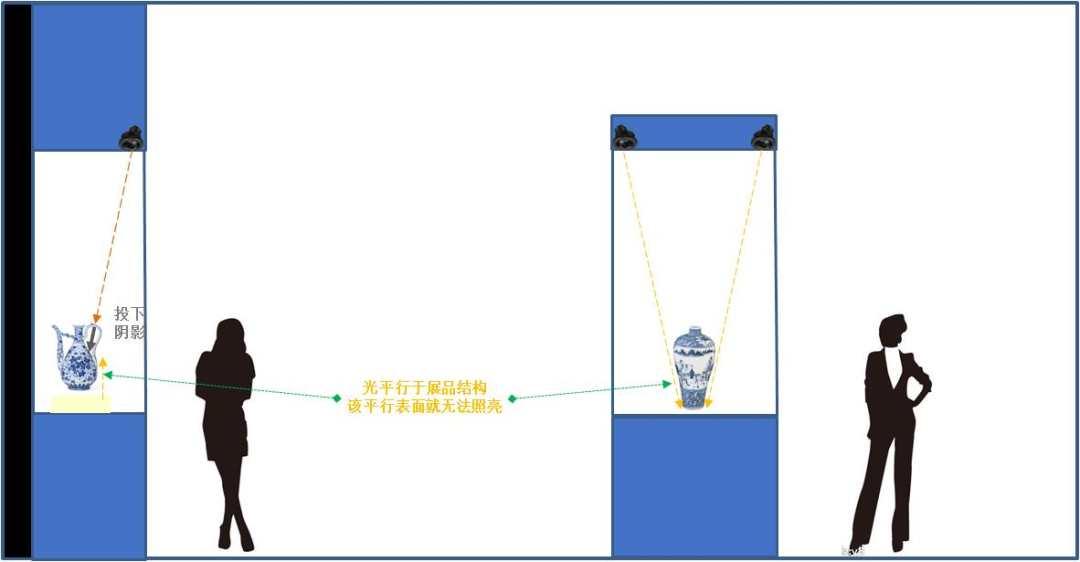 Fig. 5
Fig. 5
By adhering to these two principles—minimizing surface shadows while fully illuminating the artifact’s primary form—the optimal key light direction for the objects shown (Fig. 6) should be either frontal or lateral illumination, corresponding to their distinct morphological characteristics.
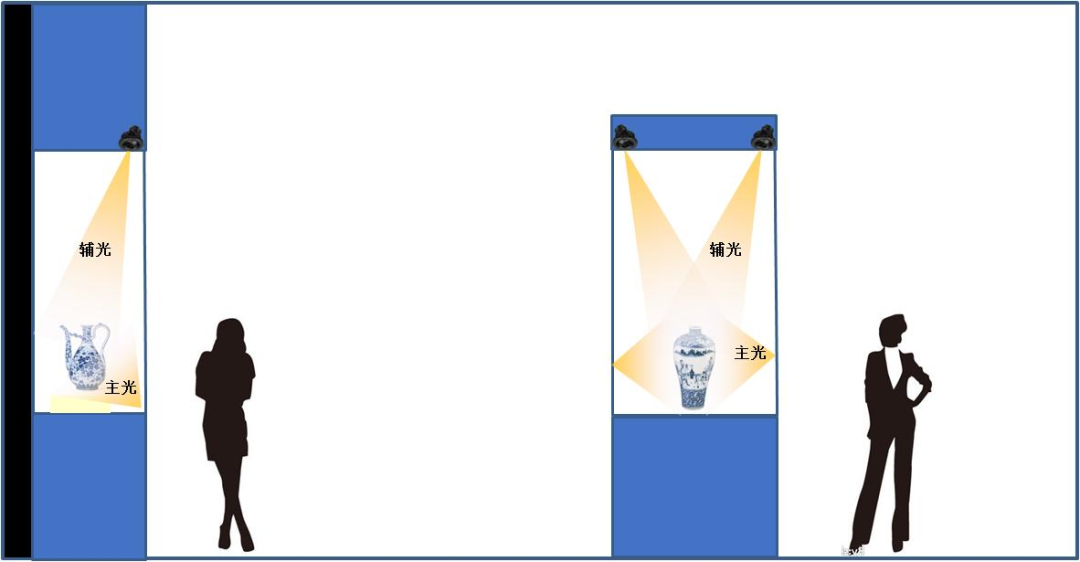
Fig. 6
Comparative Analysis of Simulated Lighting Scenarios
Single-Directional (Zenithal Only) Illumination (Fig. 7)
Software-modeled photometric performance
Resultant visual artifacts and data metrics
Bi-Directional (Zenithal + Lateral) Illumination (Fig. 8)
Enhanced volumetric representation
Quantifiable improvements in surface legibility
 (The pseudocolor representations in this study universally depict illuminance values, with the sole exception of Figure 12 which utilizes luminance pseudocolor mapping. All other figures adhere to the standardized reference scale specified above.)
(The pseudocolor representations in this study universally depict illuminance values, with the sole exception of Figure 12 which utilizes luminance pseudocolor mapping. All other figures adhere to the standardized reference scale specified above.)
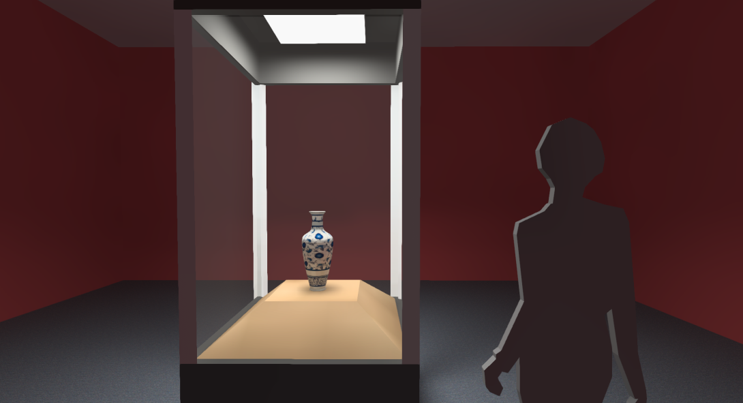
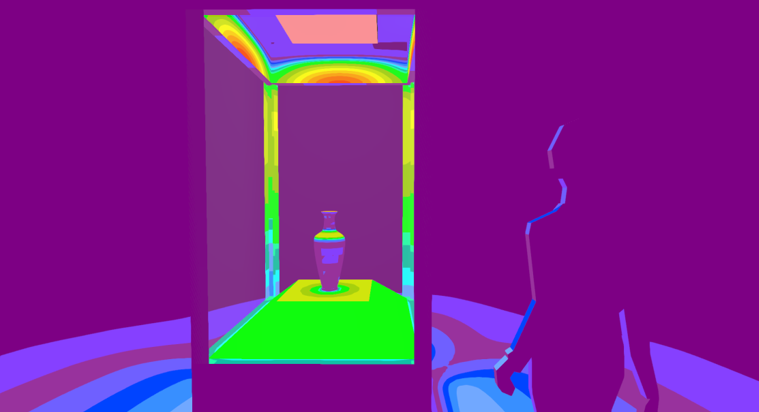
Fig. 7
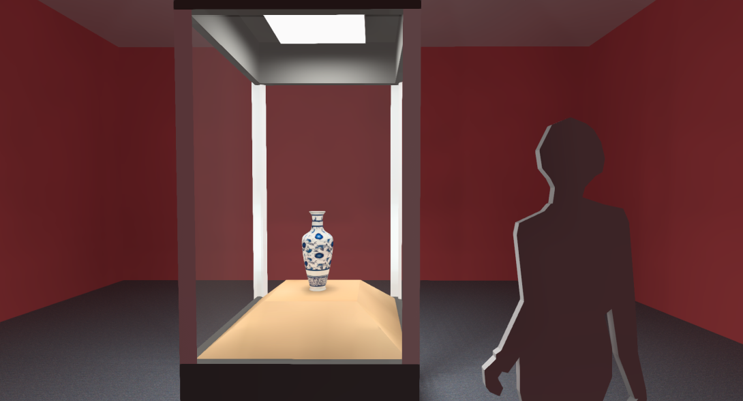
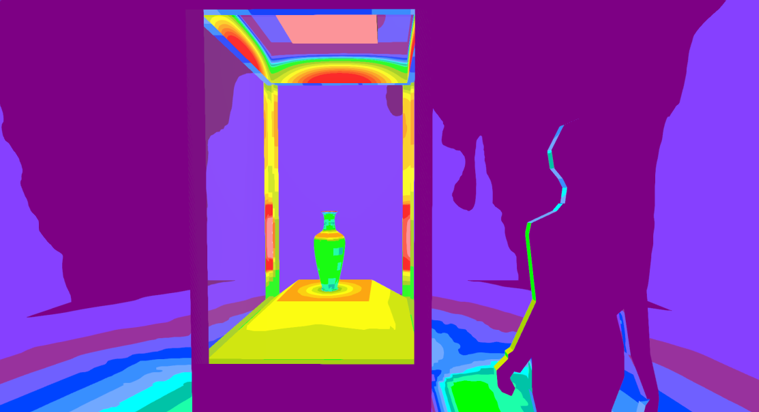
Fig. 8
In Fig.7, the vessel's body exhibits a dull, unilluminated surface with illuminance<10 lux, while the shoulder region meets the national standard of 300 lux. This results in an extreme contrast ratio of 1:30, far exceeding the recommended comfort range of 1:3 to 1:5."
Fig. 8 demonstrates optimal lighting control: the vessel's body surface is brightly illuminated (>100 lux), while the shoulder maintains its intended 300 lux intensity free from stray light interference. This achieves a comfortable 1:3 contrast ratio between surfaces.
Beyond standalone cases where side lighting enhances artifact presentation and data integrity, equivalent enhancement effects can be achieved in extended wall-mounted cases by integrating front-facing fixtures. Comparative results are shown in Fig. 9 and Fig. 10.
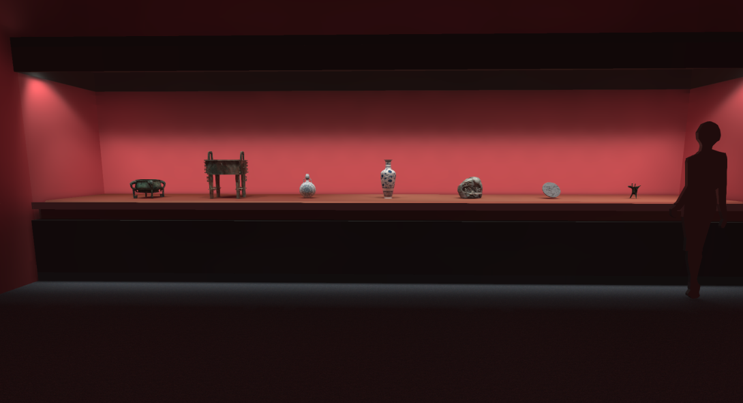
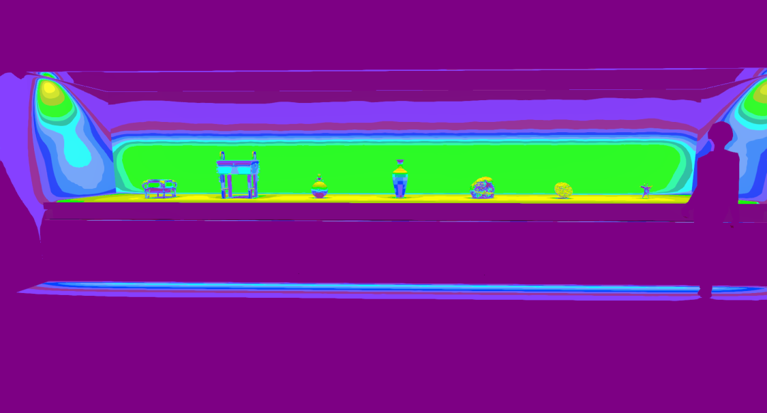
Fig. 9
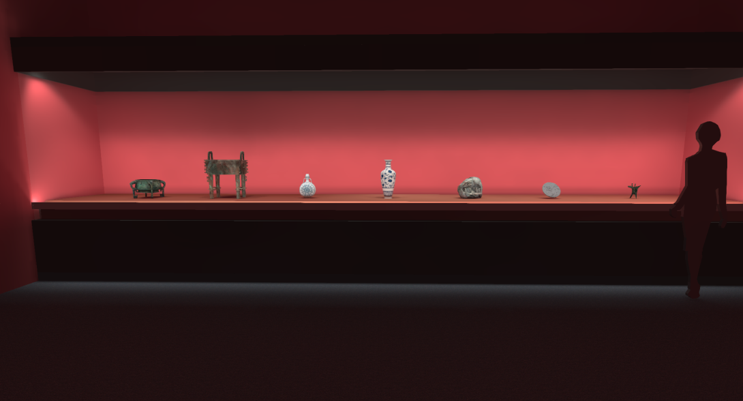
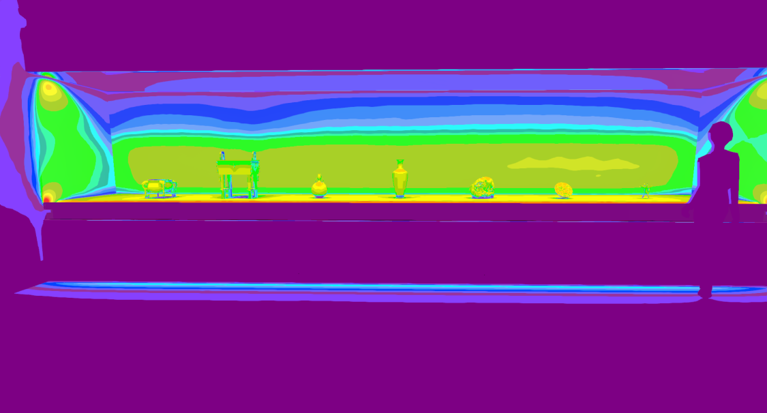
Fig. 10
It can be clearly observed that Fig. 10 exhibits significant improvements over Fig. 9 in all aspects: lighting effect expressiveness of exhibits, visual aesthetics, lighting data values, and contrast ratios.
After achieving the "first principle" goal by selecting the correct main light direction, choosing the lighting form for that direction constitutes the second critical decision in showcase lighting design. Accurate direction with incorrect form will still produce erroneous lighting results.
Common lighting forms in museum showcases:
Top and bottom lighting typically adopt surface light source forms
Top and side lighting typically adopt multi-point lighting forms
(See Fig. 11)
 Fig. 11
Fig. 11
First, objectively analyze the pros and cons of surface light source forms. (See Fig. 12)
 Fig. 11
Fig. 11

(The above values represent luminance pseudocolor data)
The luminance of the luminaire's light-emitting surface is >500 cd/m², while the luminance at the bottle shoulder is<40 cd/m², and the luminance at the bottle body is <5 cd/m². The contrast ratio between the highest and lowest values reaches 100:1, creating an overly intense and irritating effect within the field of view. According to the principle of phototaxis of the human eye, the bright luminaire surface attracts the viewer's gaze, interfering with the observer's attention. This is clearly a case where the disadvantage outweighs the advantage. (See Fig. 13)
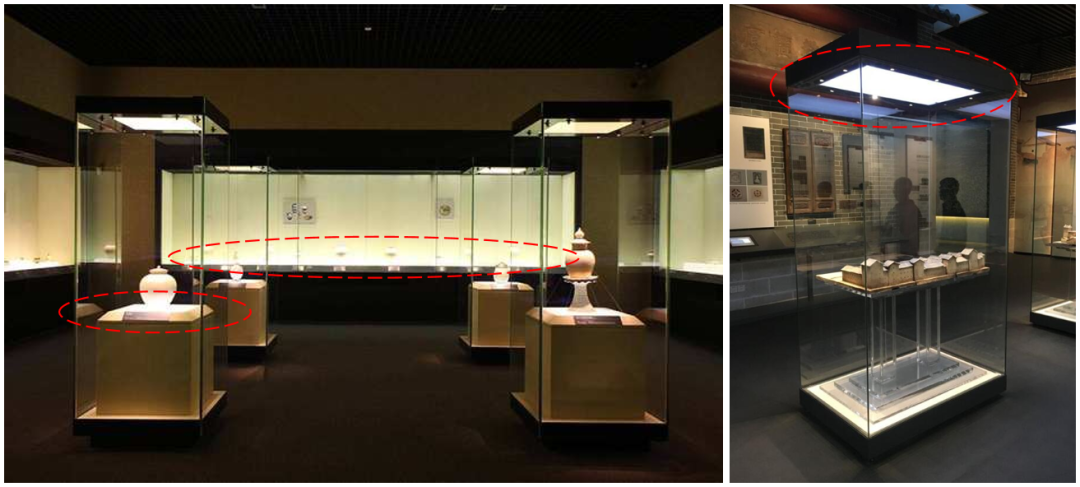 Fig. 13
Fig. 13
Secondly, objectively analyze the advantages and disadvantages of the multi-point lighting configuration. (See Fig. 14)
 Fig. 14
Fig. 14
Multiple side-light overlapping illumination severely degrades the artifact's texture, obliterating the jade-like luster of the porcelain glaze:Reflected highlights from multiple light sources disrupt the artifact's elegant form;Each luminaire casts one shadow, and the chaotic superimposition of multiple shadows creates defocusing vertigo in the visual field.
To resolve these disadvantages outweighing advantages:Adopt secondary diffuse reflection to replace surface-emitting luminaires and multi-point lighting configurations.Through darkened surface finish treatment on diffusely reflective surfaces,avoid overly bright emitting surfaces, multiple highlights, and overlapping shadow casting phenomena.This achieves both optimal artifact illumination and a superior viewing environment.(See Figs. 15, 16)
 Fig. 15
Fig. 15
 Fig. 16
Fig. 16
Achieving illumination restoration in exhibitions merely fulfills the most basic functional objective. The higher value and purpose lie in enhancing the artistic characteristics of artifacts to create lighting effects that satisfy the aesthetic demands of visual experience.
The enhancement principle:
Through subjective, directional, and guiding light-shadow shaping,
enable viewers to perceive why this artifact matters and its relevance to themselves.
Visual effects facilitate direct emotional connection,
leading to comprehension of the artifact.
This requires lighting practitioners to possess not only lighting expertise,
but also advanced knowledge in artifact studies, history, humanities, visual psychology, art appreciation, and aesthetic cultivation,
coupled with high artistic expressiveness.
Hence, selecting a truly competent collaborative partner yields multiplied efficacy.
Professional lighting employs design artistry
– including light composition and figure-ground relationships of light/shadow –
to visually manage and guide audience cognition and emotional response
(See Figs. 17/18/19).
It provides richer immersive light-shadow experiences,
truly "bringing artifacts to life" beyond static presentation,
generating increased exhibition traffic,
encouraging prolonged viewer engagement,
ultimately establishing the museum as:
- A trusted professional venue
- An appreciated cultural destination
- An educational institution worthy of study
- A leisure space deserving of lingering
This constitutes the human-centered breakthrough strategy
for both display-case and ambient museum lighting.
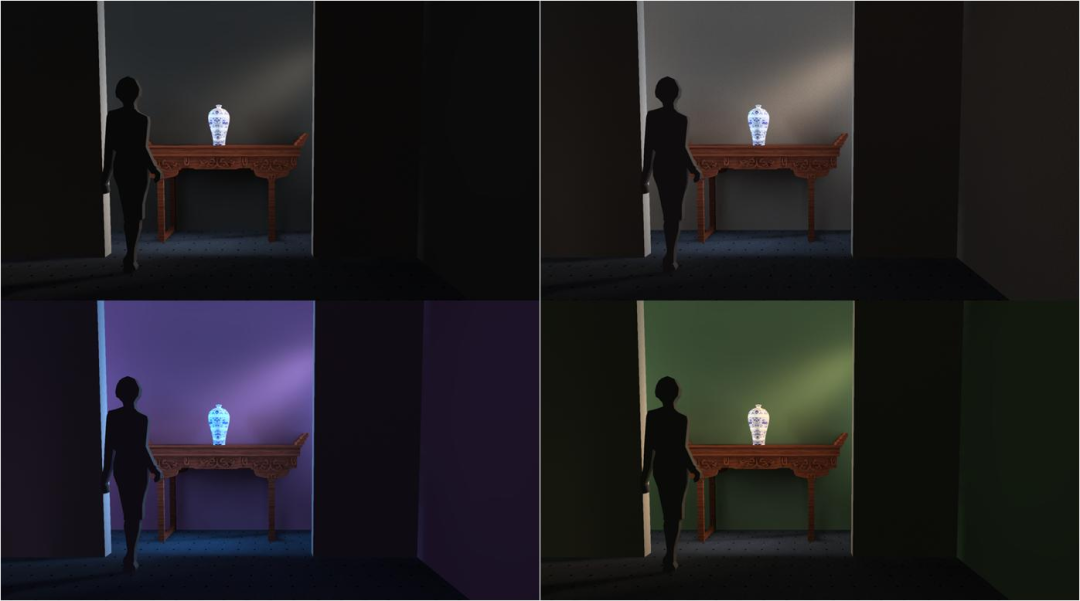 Fig. 17
Fig. 17
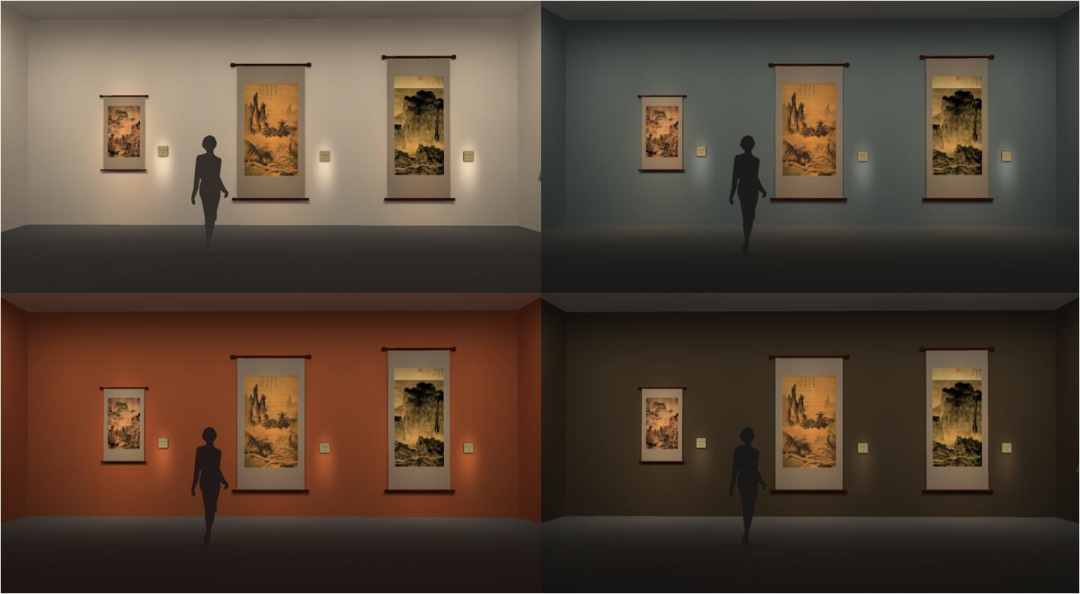 Fig. 18
Fig. 18
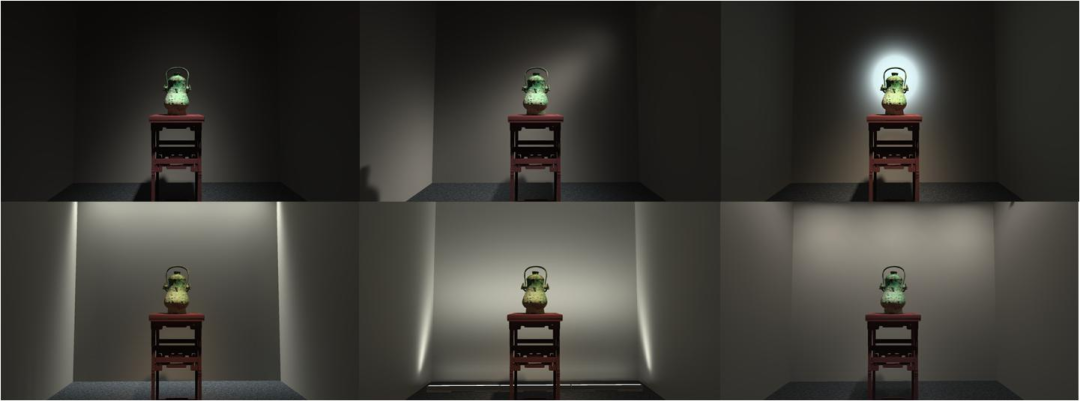 Fig. 19
Fig. 19